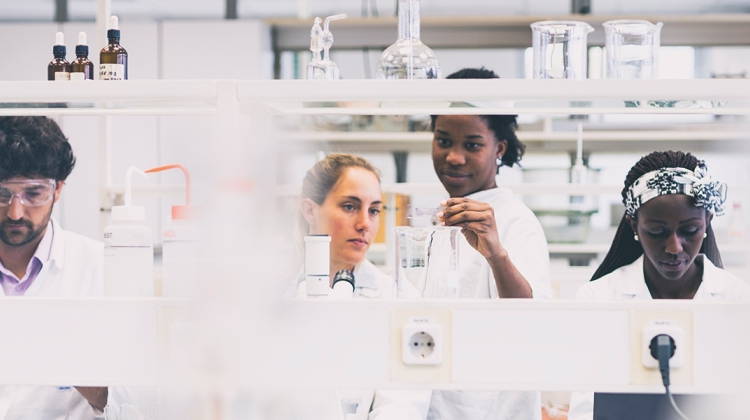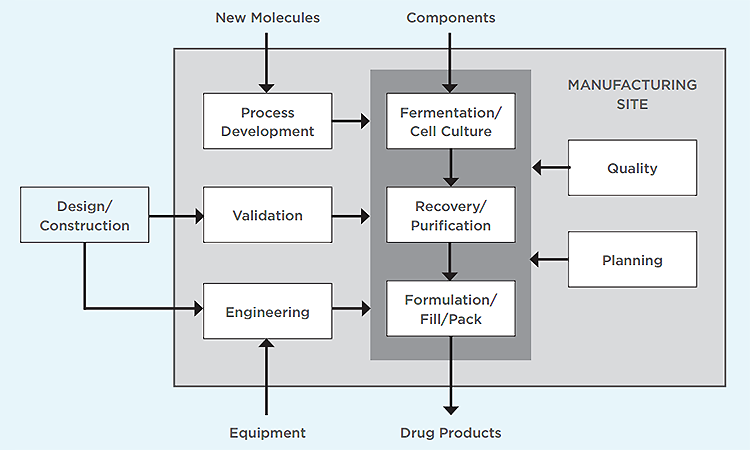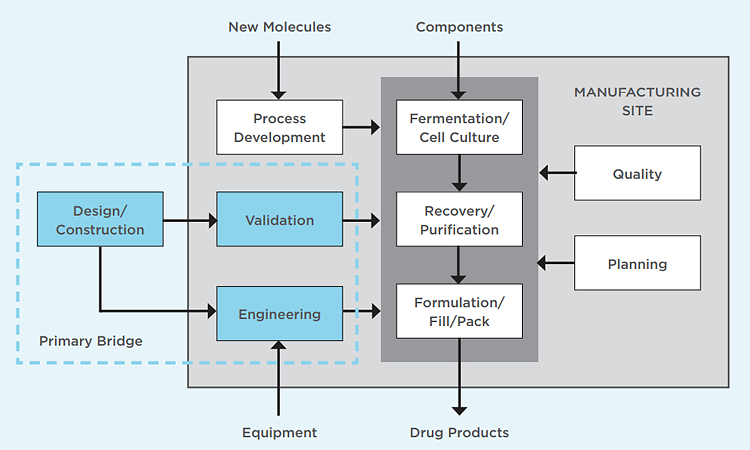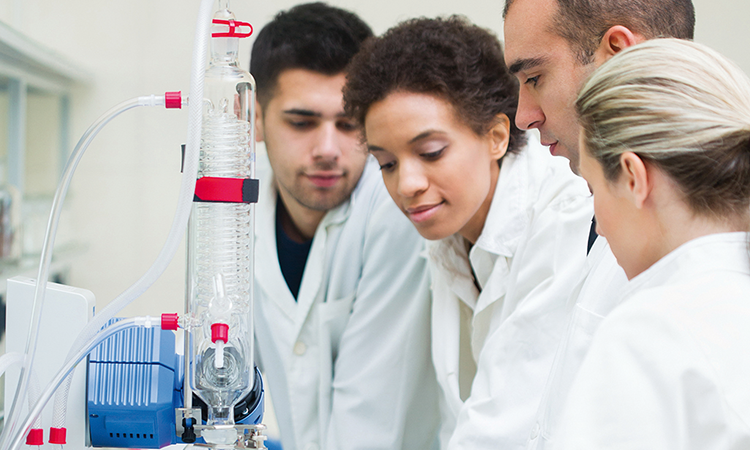Crossing Over to Large Molecules

Improvements in genetic engineering techniques have fueled the growth of well-characterized large molecules since the 1980s. Today, revenues from the sale of biopharmaceuticals in the United States exceed $100 billion annually. 1 Global sales are growing at a rate of more than 8%, double the rate of traditional pharmaceuticals. 2 To reduce business risk, big pharmaceutical companies have added biopharmaceuticals and vaccines—the so-called natural biological products—to their portfolios.
- 1Ernst & Young Global Limited (EY). "Key Dealmaking Insights," in Biotechnology Report 2016: Beyond Borders. http://www.ey.com/Publication/vwLUAssets/EY-beyond-borders- 2016/$FILE/EY-beyond-borders-2016.pdf
- 2Otto, Ralf, Alberto Santagostino, , and Ulf Schrader. "Rapid Growth in Biopharma: Challenges and Opportunities." Our Insights. December 2014. McKinsey & Company. http://www. mckinsey.com/industries/pharmaceuticals-and-medical-products/our-insights/rapidgrowth- in-biopharma
Engineers looking to enter the biomanufacturing workforce may feel unprepared without a background in cell culture or chromatography. There are, however, several positions that provide process support or technical assistance to production operations that require no direct experience with biological products. These can serve as effective bridges to the biomanufacturing space. Once there, it’s easier to move to another position within biomanufacturing after a few years of on-the-job training and experience.
This article describes some of the processes and skills required to produce large molecules, several of which can help individuals bridge gaps in work experience. Closing some of those gaps through technical training is also discussed.
TRADITIONAL VS. BIOMANUFACTURING PHARMACEUTICAL PROCESSES
For this article, traditional pharmaceuticals are considered to be small-molecule active pharmaceutical ingredients (APIs) or dosage forms containing one or more APIs that are administered orally. These dosage forms are available from pharmacies via prescription or over the counter at retail outlets. The unit operations that produce APIs and liquid forms are quite similar to some of those used in biomanufacturing, but specialized equipment for blending, granulation, and compression is required for the production of oral solid dosage forms. In general, traditional pharmaceutical processes are fairly resistant to microbial contamination and active ingredients are stable during processing.
Biomanufacturing, on the other hand, yields biological products that contain whole cells or complex proteins. These biological systems must retain their structure or post-translational modifications, or both, to maintain functionality, so they can’t be ingested and exposed to the harsh environment of the gastrointestinal tract. Instead, they are typically administered via injection or infusion, often in a clinical setting.
Critical attributes of any injectable drug product are sterility and stability. Manufacturing processes involve fermentation, mammalian cell culture, and recovery or purification operations such as centrifugation, microfiltration, column chromatography, and ultrafiltration. The requirement for drug products to be sterile and have low endotoxin levels leads to special processing to maintain low bioburden and a final aseptic filling process. Process failures can result in microbial contamination, unwanted byproducts, or both.

BRIDGES TO BIOMANUFACTURING
Bioprocessing operations used to produce biological products are shown in the central section of Figure 1. Microbial cells (fermentation) or mammalian cells (cell culture) grow in bioreactors and may be engineered to express complex proteins such as monoclonal antibodies. The protein or desired cells are recovered from the rest of the culture and processed to maximize purity. Finally, the protein is formulated and filled into the specified container. Since these unit operations are based on biological principles, the staff that execute production typically have extensive training in the principles of biology, microbiology, or biochemistry.
Outside the core bioprocessing operations, functional groups provide process support that is critical to the biomanufacturing operation, but is often independent of drug product or process type. Raw materials and other components, for example, must be stored and dispensed. Process safety and environmental issues are similar across the drug industry. Engineering professionals execute improvement projects and maintain facilities. In general, personnel in these roles don’t require a background in biological sciences. Open positions in these groups, therefore, can be good bridges to biomanufacturing, especially if the job seeker has equivalent experience and a working knowledge of current good manufacturing practice (cGMP).
Job seekers can find plenty of bridges leading to the biomanufacturing space.
Groups that provide technical assistance to biomanufacturing operations are another source of bridges. Professionals in these groups have relevant technical or compliance skills, or both, but knowledge of biological principles and experience in bioprocessing are not required to meet the minimum requirements of the job. For example, the professionals may be subject matter experts in technology transfer, validation, automation, engineering design, and quality. These talents are fully transferable to biomanufacturing. The primary bridges are highlighted in blue in Figure 2.

REAL BRIDGE STORIES
To obtain first-hand testimonials from professionals who had made the switch from traditional pharmaceutical processes to biomanufacturing, we interviewed four biomanufacturing professionals, all based in North Carolina: Severin Butler, Lead Process Engineer, Novo Nordisk; Greg Cox, Quality Specialist, Merck; David Knorr, Senior Process Engineer, Jacobs; and Russell Teague, independent consultant. Table A identifies the bridges that helped them make the transition. While bridges involving process equipment and cGMP were expected, the biggest surprise was that all respondents mentioned process safety.
CLOSING THE TRAINING GAPS
Once a bridge or set of bridges to the biomanufacturing space has been crossed, it’s time to start learning biological principles and bioprocessing techniques. Some manufacturers offer in-house training courses, but these usually address only procedural or quality topics. Professional meetings and external training courses offer quick learning, but these are typically expensive for individuals, and company reimbursement is reserved for more established employees. The fastest way to learn the business is to read trade journals, visit biotechnology websites, and recruit a subject matter expert as a mentor. Table B summarizes the responses on training.

FINAL THOUGHTS
The biomanufacturing industry is attracting college graduates looking for job security and good salaries, but positions are also available for seasoned professionals with experience in other types of drug manufacturing. Job seekers can find plenty of bridges leading to the biomanufacturing space, and skills and experience can be gained while providing process support or technical assistance. Finally, some training in biological sciences or bioprocessing will help with the transition but can also be completed after hire.


